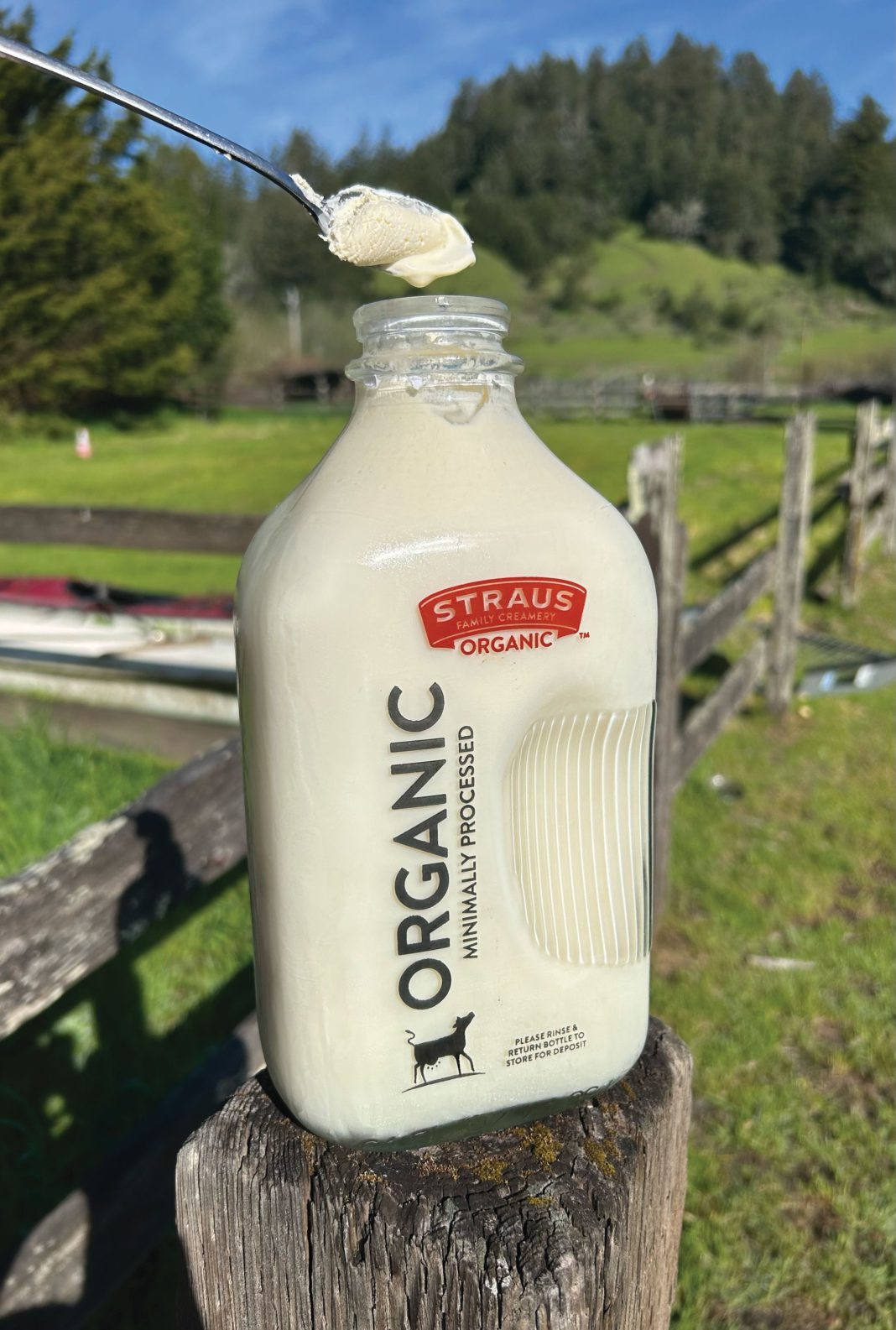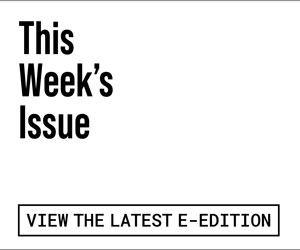Holy cow—a collaboration between social media and a local dairy has gone viral.
Marin-based Straus Family Creamery’s organic milk has unearthed an interesting online trend in local and global food culture. Readers at home may be wondering, “How now brown cow?” So, let’s just take the bull by the horns and dive in.
Last year, popular social media app TikTok made Straus Family Creamery internet famous after a Bay Area foodie influencer named Peggy Xu opened Pandora’s Bottle, so to speak.
Xu shared her Straus experience, cream top and all, with the world, and the world ate it up (literally). The app’s audience was nothing short of awe-struck by the milk’s glass bottle and cream top. This trend meant that both interest in and sales of Straus products experienced an unprecedented spike last fall as a result.
Predicting what internet trends will sweep the world wide web now or next is difficult, if not nigh on impossible. And when Marin’s own Straus Family Creamery was side-swept with internet fame, it revealed a more global yearning for something locals of the North Bay already have—a collective desire for real food in a world of mediocre convenience.
Considering most modern milk comes from a supermarket shelf, sold en masse in plastic or paper cartons, social media’s rampant excitement of seeing real milk makes a certain amount of sense. What makes less sense is the udderly hilarious and out-of-touch mistranslation that happened due to modern society’s disconnect from … well, real food.
During the heyday of TikTok’s Straus Family Creamery craze, every food influencer and their grandmother was ordering a bottle to stay relevant, get views and see what all the hubbub was about, presumably. But the influencers, unlike their grandparents, had never seen a cream top on milk before, and their interpretations of its nature were fantastically farcical.
Rather than recognizing (or researching) the layer of cream that naturally occurs in non-homogenized milk, some influencers just decided that Straus milk came with a surprisingly tasty mold on top—the story of Straus’ tasty moldy milk spread far and wide in a strangely dairy-specific example of how easily social media can make misinformation mainstream.
Despite the monumental disconnect between people and the food they consume that this trend so clearly demonstrated, the silver lining is this: Humanity craves natural food so much that they will still go gaga over Straus and its cream top. And if they have to eat presumed mold to get to the good stuff, then so be it.
So, what exactly is it about Straus milk that made the masses on social media so milk-hungry? Well, to understand that and to dive deeper into the local and global implications, one first has to know a little bit about Straus itself.
Let’s take a metaphorical trip in a time machine and rewind this story, starting in reverse from today’s modern world of TikTok in 2025 and going backward to its origin in the idyllic landscape of West Marin of the 1940s. When Straus began, the world was a very, very different place with no iPhones or internet to speak of. And that just may be what makes the milk and auxiliary dairy products so gosh darned delicious.
Straus is a legacy family creamery with a history almost as rich as its signature cream top. The farm itself was officially founded by Albert Straus, though his parents, Bill and Ellen Straus, were the OG couple to put down some dairy farm roots in Marshall in the 1940s.
In the beginning, the Straus family farm was home to 23 Jersey cows. Now, Straus has grown their modest herd of dairy cattle into a 270-strong force of organic bovines. The Straus cows are hormone-free, antibiotic-free and free range over 500 acres of pasture that sprawl across West Marin. During the day, they munch on grass and frolic together through the fields, as many of us wish we could do instead of work. And then, at night, the herd of dairy cows is led indoors to lay their large, weary heads to rest on soft hay in a barn.
The Straus Family Creamery has always put its best hoof forward, especially when it comes to the environment. One of the company’s most distinctive and beloved features is its reusable glass bottle. Back in the day, glass bottles delivered by milkmen were common. But as time went on and the world poured value into quantity over quality, milk containers turned into plastic, and cream tops were almost forgotten remnants of a bygone era.
But Straus’ recent surge of popularity on social media begs the question: Is that bygone era making a comeback? All signs point to a possible, resounding “yes.”
Now, one could talk about Straus and TikTok until the cows come home. But to avoid milking the topic entirely, let’s pivot a bit to look at Marin and its food culture as a whole (instead of just 2% of it).
Marin is already deeply familiar with the exciting “new” trends sweeping the culinary world. In fact, California’s Bay Area is often considered to spearhead many cultural trends, from cannabis to wellness to cuisine. However, the healthy, eat-green mentality that’s intrinsic to Marin County is more than a localized cultural concept—it’s also an indicator of how the global mindset toward food could change in the near future. After all, California’s central coast is known for being an epicenter of shifts in art, lifestyle and culture.
So, what new trend does TikTok’s Straus obsession indicate for the future of our relationship with food? Well, these breaking trends are, ironically, revealing a desire for a return to the true source of food, as it was before processed convenience became the popular norm. Even though many of the influencers thought the cream top was made of mold, they still enjoyed the Straus experience because of the quality. And people can taste quality, made-up mold or not.
Happy, pasture-fed cows, raised organically without antibiotics or artificial hormones, naturally make better milk. The same can be said for any and all products we eat, as many of Marin’s residents already know very well.
A supermarket tomato bought in November tastes nothing like a vine-ripe heirloom tomato in late summer. A mass-produced lion’s mane mushroom doesn’t hold a candle to a fresh-foraged one. And a plastic carton of milk just isn’t comparable to the real deal, as the Straus trend so clearly shows. So, let’s celebrate the fatted calf that is Marin’s food culture—mo(ooo)ve aside, processed convenience food; it’s time to return to the source with real food and real flavors.








